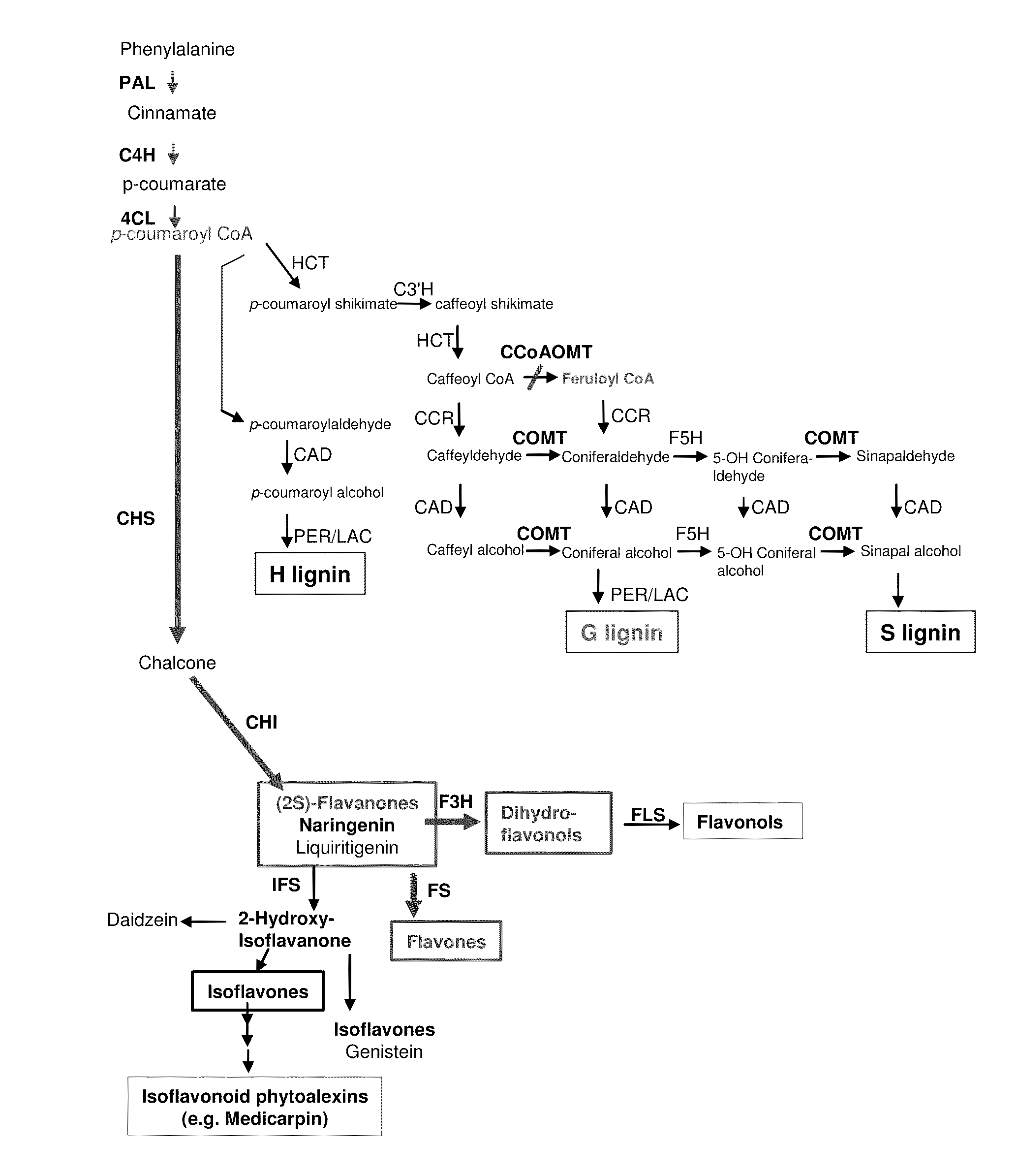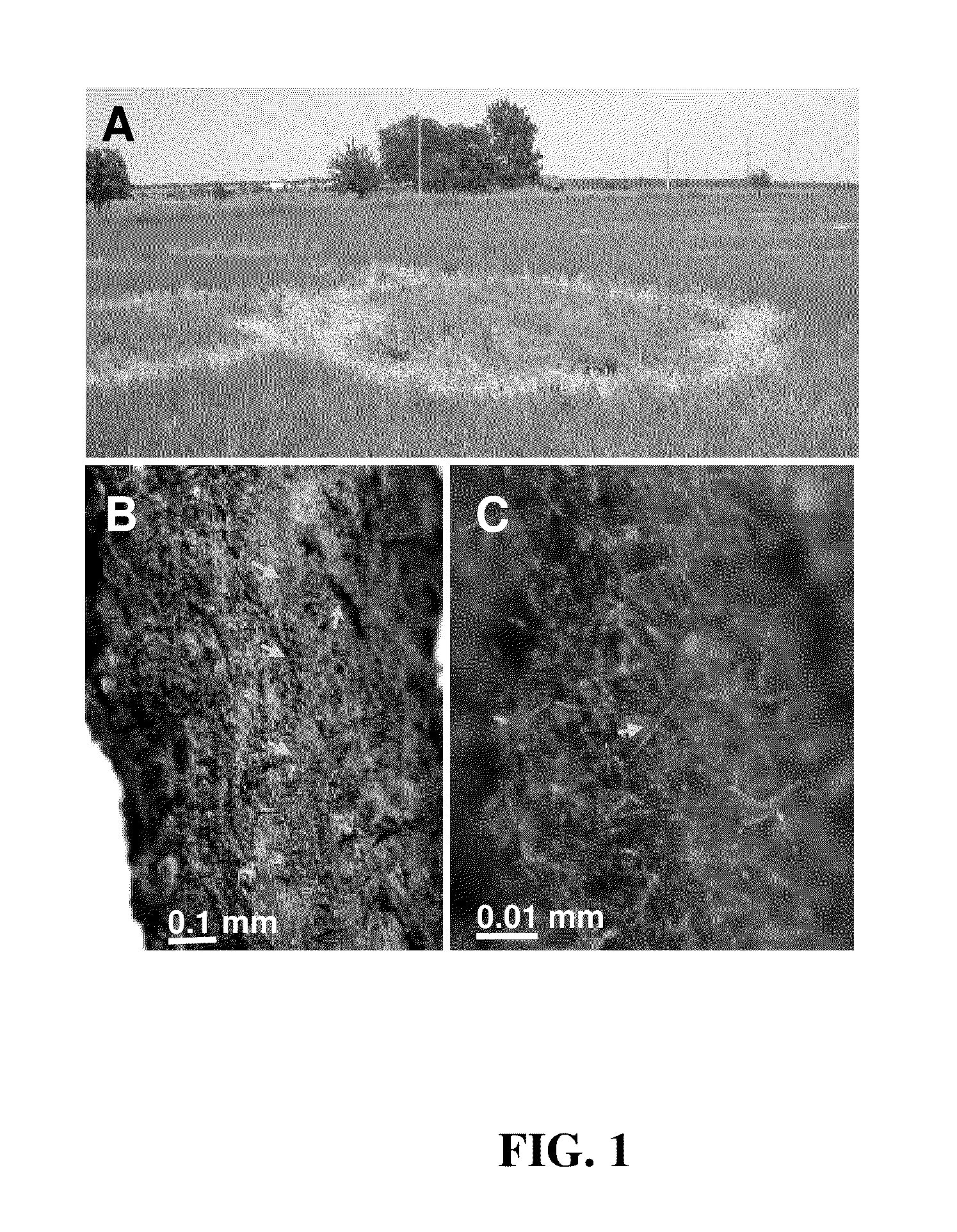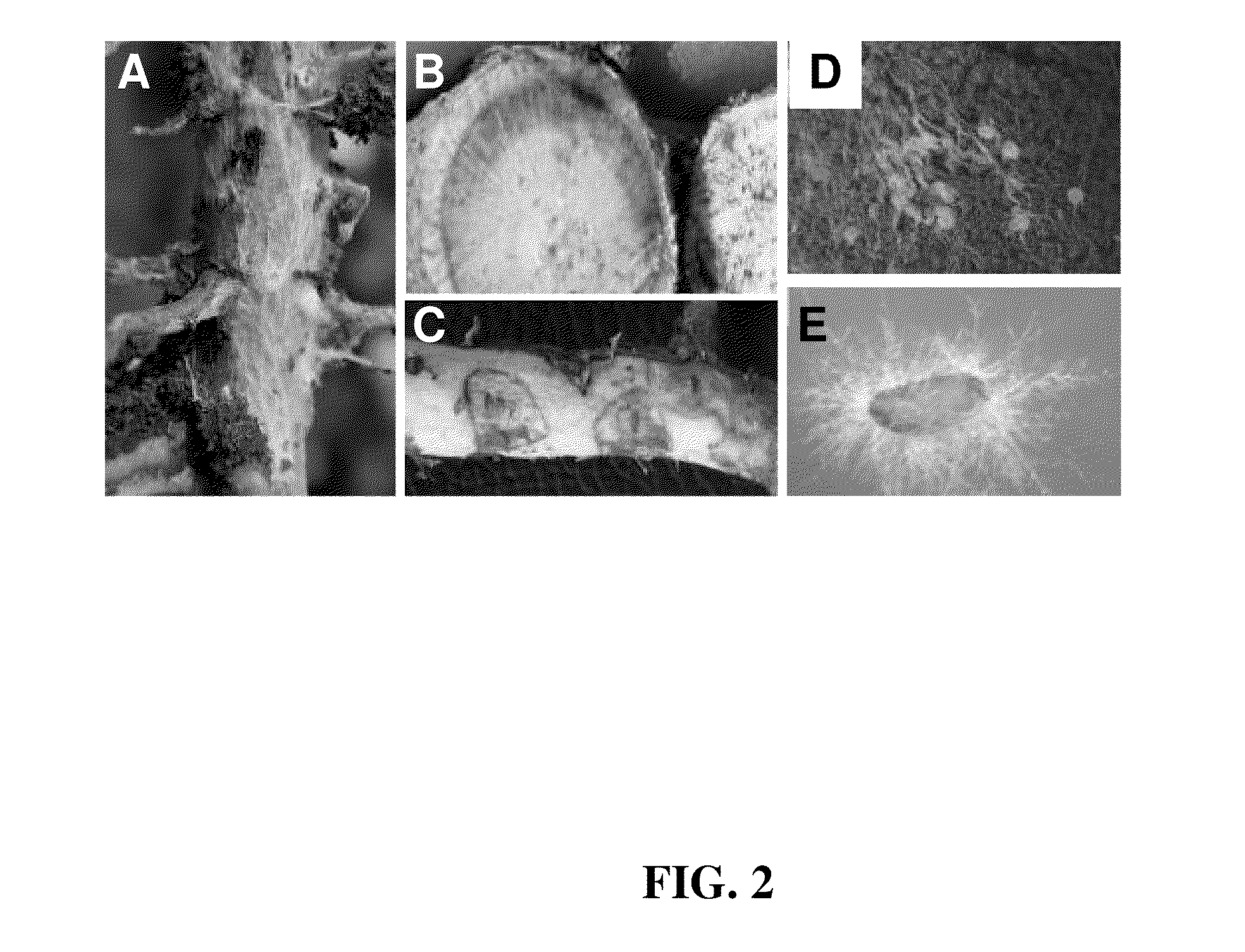Disease resistant plants
a disease-resistant plant and plant technology, applied in the field of plant disease resistance, can solve the problems of significant economic losses every year, and achieve the effect of reducing the severity of phymatotrichopsis root rot and increasing the resistance to p
- Summary
- Abstract
- Description
- Claims
- Application Information
AI Technical Summary
Benefits of technology
Problems solved by technology
Method used
Image
Examples
example 1
Down-Regulation of the Lignin Pathway Enzymes Caffeoyl CoA 3-O-Methyl-Transferase and Caffeic Acid 3-O-Methyltransferase Results in Increased Resistance of Alfalfa to Phymatotrichopsis omnivora
example summary
A. Example Summary
[0095]Phymatotrichopsis omnivora (Duggar) Hennebert, causes a destructive root rot in cotton, alfalfa (Medicago sativa), and many other dicot species. No consistently effective control measures or resistant host germplasm for Phymatotrichopsis Root Rot (PRR) are known. The relative genetic intractability of cotton and alfalfa precludes their use as pathosystem hosts for P. omnivora and thus most genomic approaches to study PRR. Therefore, the model legume M. truncatula was used, taking advantage of its available genetic and genomic resources to investigate PRR. Expression profiling of PRR-infected M. truncatula roots using Affymetrix chips identified several up-regulated genes involved in the phenylpropanoid pathway, cell wall modification and lignin biosynthesis. Cinnamyl alcohol dehydrogenase, hydroxycinnamoyltransferase, caffeic acid 3-O-methyltransferase (COMT) and caffeoyl CoA 3-O-methyl-transferase (CCOAOMT) were all up-regulated in roots during pathogenesis....
example 2
Exploiting the Medicago truncatula Genome for Root-Specific Genes
[0121]This Example provides expression data containing three independent root samples (without nodules). Each root sample was tested with three biological replicates. Among the 50,900 M. truncatula probesets on the Affymetrix GeneChip®Medicago Genome Array:
[0122]23,224 probesets were found expressed in roots (P=3 for all three root samples)[0123]619 probesets were expressed only in roots within the organ series[0124]639 were expressed (P=3) in all three root samples[0125]400 were expressed in all root samples and were specific to roots[0126]273 were root-specific with expression≧100 (mean of the three root samples)[0127]189 showed minimal expression=100 in all three root samples[0128]21 showed minimal expression=1000 in all three root samples
[0129]Table 1 lists 18 DNA sequences that comprise root-specific promoters (−2 kb, for the purpose of this study) corresponding to probesets mapped on the Medicago genome sequence....
PUM
| Property | Measurement | Unit |
|---|---|---|
| temperature | aaaaa | aaaaa |
| diameter | aaaaa | aaaaa |
| v/v | aaaaa | aaaaa |
Abstract
Description
Claims
Application Information
 Login to View More
Login to View More - R&D
- Intellectual Property
- Life Sciences
- Materials
- Tech Scout
- Unparalleled Data Quality
- Higher Quality Content
- 60% Fewer Hallucinations
Browse by: Latest US Patents, China's latest patents, Technical Efficacy Thesaurus, Application Domain, Technology Topic, Popular Technical Reports.
© 2025 PatSnap. All rights reserved.Legal|Privacy policy|Modern Slavery Act Transparency Statement|Sitemap|About US| Contact US: help@patsnap.com



